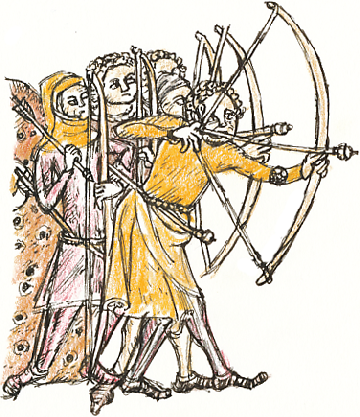previous | home page | this month | e-
In Search of Yorkshire’s Robin Hood
Richard Bell’s Wild West Yorkshire nature diary, Sunday, 8th November 2009
previous | home page | this month| e-
previous | home page | this month| e-

THE BOOKLET that I’m currently working on is Walks in Yorkshire’s Robin Hood Country. Robert Hode, a yeoman of 14th century Wakefield is our local contender to for the historical Robin Hood. After 6 or 7 centuries, I’d assumed that the evidence that would be available for me to sift through would be minimal; the early ballads themselves and contemporary documents such as the Manor Court Rolls. Hadn’t the Victorian archivist the Joseph Hunter said the last word on the historical Robin in 1852?
Definitely not! There’s a lot of lively research currently in progress with new theories under discussion at regular Robin Hood conferences held around the world. You’d think that by focusing on one particular character I could narrow down my research but I’ve wandered from my intended path to take in Elizabethan dramatists and Arthurian legend both of which, surprisingly, throw light on the story and characters.
I’ve read about a dozen books so far and I’d happily go on reading a dozen more but I’ve got the basics of the particular story that I want to tell. Any book project is something of an iceberg with most of the research hidden from direct view but I’m reminded of the film producer’s adage that you should put your budget where it will show, on the screen.
I’d love to be able to spend a year or two writing a thesis on the subject but it’s more important for me now to start getting my historical comic strips assembled, incorporating the results of my research.
Well, perhaps I could read one more book: I like the sound of Robin Hood, The Unknown Templar by John Paul Davis . Edward II does seem to have been more sympathetic to the Templars than his French counterpart . . . so who knows.
I’ve just finished Robin Hood, The Man Behind The Myth, by Graham Phillips & Martin
Keatman and Robin Hood, Medieval and Post-
My drawing after the original in the Luttrell Psalter of longbow practice at the
butts (shooting range) c. 1340. Like every other town, Wakefield had its archery
butts. Later in the middle ages we know they were situated on the Earl’s Ings -
